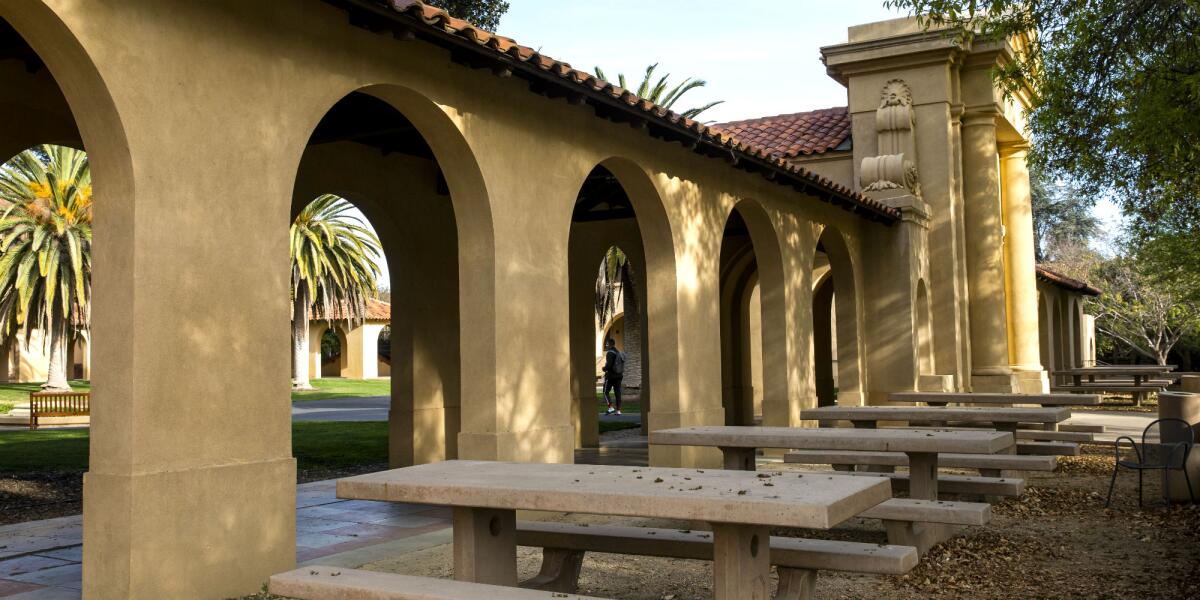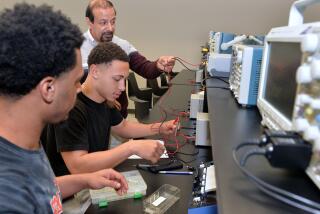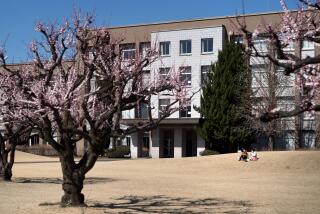Coronavirus outbreak gives colleges a chance to revive a system already breaking

- Share via
Woe is the college class of 2020, whose members are being denied their full measure of pomp and circumstance by the coronavirus outbreak. Instead of donning a robe and walking across a stage to accept their diplomas in front of family and friends, they’re likely to collect their sheepskins by mail after they and their fellow students finish their studies from home.
All the same, a bigger concern is for the undergraduates who are not about to graduate. Those students have been taking their classes online, which works for some courses — and some students — better than others. Previous experience has shown that disadvantaged students and those who are the first in their family to attend college struggle with distance learning. These groups were already most likely to drop out of college; if COVID-19 exacerbates that problem, it would only widen an education gap that the country has been struggling to close.
That’s just one illustration of how the virus’ effects on higher education are likely to stretch far beyond the current term. Indeed, COVID-19 has superheated the issues confronting colleges and their students in ways that will reverberate for years, if not forever. This could be a moment for revamping a system that was already on the verge of breaking.
The problems start with the cost. College is simply unaffordable for many Americans, keeping some would-be students from enrolling and leaving others who do enroll with crushing debt. Even at state schools, families are often required to pay an ever-bigger portion of their tuition. And the higher cost isn’t necessarily producing better results, as less than two-thirds of undergraduates at four-year schools complete their education.
The stock-market meltdown and economic collapse triggered by the outbreak have only exacerbated the financial challenge of college for all but wealthy Americans. With unemployment soaring, even many upper-middle-class families can’t afford the hefty bills of private higher education.
That means most families will need more financial aid at a time when colleges and universities are less able to help. Their endowments have taken a big hit, and they’ve had to refund the money families paid for the lodging and meals that students will no longer be receiving. Travel restrictions and other concerns might discourage international students, who have been a sought-after source of fully paid tuition, from going to school here.
Meanwhile, state governments are seeing their revenue plummet during the pandemic-driven downturn, so they’re hard-pressed to provide extra money to their state college and university systems.
The higher education system can certainly try to return to normal after the virus-related restrictions are lifted and the economy bounces back, but why bother? Normal wasn’t so hot.
Americans have dreamed of the tuition-free higher education that many European nations have, while clinging to a romantic and outmoded vision of college as an idyllic place packed with a full complement of sports teams on a leafy campus with climbing walls and long lists of campus-sponsored activities. As a result, students don’t get as much educational bang for the dollar as they should.
There are too many misplaced priorities. U.S. colleges spend particularly large amounts on non-teaching staff such as fundraising experts, marketers and administrators; they also pursue costly star faculty and smaller class sizes, which haven’t been shown to result in a superior education but do result in higher college rankings by such publications as U.S. News & World Report. Our colleges generally expect too much paper-publishing by faculty and not enough teaching. And their financial aid practices are generally obscure and differ from school to school, so families have little idea how to shop for the most affordable options.
That’s not how European nations do it. Their largely stripped-down model focuses on academics. Classes tend to be larger and administrative costs far smaller. Costs are transparent and more centralized. More students live at home and commute. Athletic teams are few, if they even exist; contrary to what most people think, such teams generally cost colleges far more money than they bring in and tend to benefit affluent students, not disadvantaged ones, in college admissions.
The full-on European model might never work here. The emphasis U.S. colleges place on faculty research has helped make our research universities the envy of the world. Commuting isn’t an option when schools might be far away. It would take big tax increases to underwrite free tuition for all. But we can use the current crisis to address an ailing system by adopting practices that lower costs and emphasize the “education” in higher education.
More to Read
A cure for the common opinion
Get thought-provoking perspectives with our weekly newsletter.
You may occasionally receive promotional content from the Los Angeles Times.









